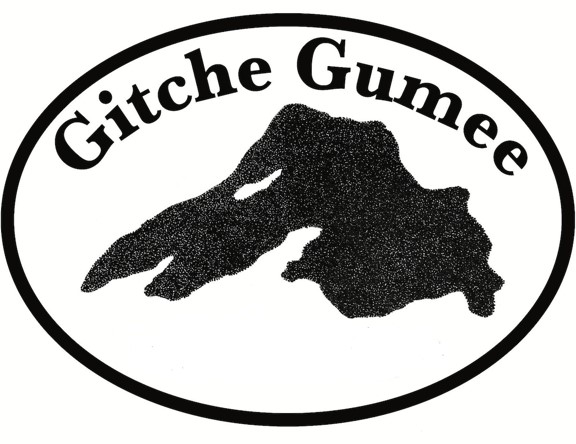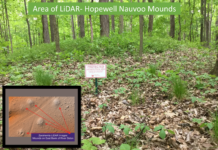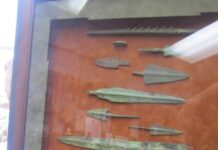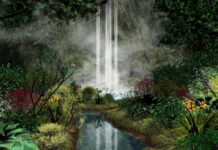Gitche Gumee: Home of the Lamanites
Nephites- Haudensaunee (Iroquois)?
Lamanites- Anishinabek (Algonquian)?
In the heart of North America lies a vast chain of inland seas whose depths contain more than one-fifth of the surface freshwater on the planet, the largest natural reservoir on an ever more thirsty Earth. We call these freshwater seas the Great Lakes. The five connected bodies, which together form America's fourth coast, have played a fundamental role in the history of North America and – because their resources-rich basin became the heartland of American industrial might – the history of the world as well. The region’s ecosystem contains more than 3,500 species of plants and animals, including some that are found nowhere else in the world, and its economy is one of the most diverse on the continent, home to half of Canada's manufacturing capacity and one-fifth the manufacturing capacity of the United States. Docuwiki
Dish With One Spoon Wampum Belt Covenant
"This territory where we stand now was the subject of the Dish With One Spoon Wampum Belt Covenant, an agreement between the Anishinabek and Haudensaunee Confederacies and allied nations to peaceably share and care for the land around the Great Lakes.
A “dish with one spoon” was often mentioned by Indigenous peoples while making treaties with one another to avoid violent conflict. The “dish” represents the land that is to be shared peacefully and the “spoon” represents the individuals living on and using the resources of the land in a spirit of mutual co-operation. Often, a bowl or kettle was referred to rather than a dish." Source
The Anishinaabe (alternatively spelled Anishinabe, Anicinape, Nishnaabe, Neshnabé, Anishinaabeg, Anishinabek[1]) are a group of culturally related Indigenous peoples present in the Great Lakes region of Canada and the United States. They include the Ojibwe (including Saulteaux and Oji-Cree), Odawa, Potawatomi, Mississaugas, Nipissing and Algonquin peoples. The Anishinaabe speak Anishinaabemowin, or Anishinaabe languages that belong to the Algonquian language family. Wikipedia
The Haudenosaunee (/ˌhoʊdinoʊˈʃoʊniː/[3][4] meaning "people who are building the longhouse"), commonly known as Iroquois (/ˈɪrəkwɔɪ/ or /ˈɪrəkwɑː/), are an Iroquoian-speaking confederacy of Native Americans and First Nations peoples in northeast North America and Upstate New York. They were known during the colonial years to the French as the Iroquois League, and later as the Iroquois Confederacy. The English called them the Five Nations, comprising the Mohawk, Oneida, Onondaga, Cayuga, and Seneca (listed geographically from east to west). After 1722, the Iroquoian-speaking Tuscarora from the southeast were accepted into the confederacy, which became known as the Six Nations.
The Confederacy came about as a result of the Great Law of Peace, said to have been composed by Deganawidah the Great Peacemaker, Hiawatha, and Jigonsaseh the Mother of Nations. For nearly 200 years, the Six Nations/Haudenosaunee Confederacy were a powerful factor in North American colonial policy, with some scholars arguing for the concept of the Middle Ground,[5] in that European powers were used by the Iroquois just as much as Europeans used them.[6] At its peak around 1700, Iroquois power extended from what is today New York State, north into present-day Ontario and Quebec along the lower Great Lakes–upper St. Lawrence, and south on both sides of the Allegheny mountains into present-day Virginia and Kentucky and into the Ohio Valley.
The St. Lawrence Iroquoians, Wendat (Huron), Erie, and Susquehannock, all independent peoples known to the European colonists, also spoke Iroquoian languages. They are considered Iroquoian in a larger cultural sense, all being descended from the Proto-Iroquoian people and language. Historically, however, they were competitors and enemies of the Iroquois League nations.[7] Wikipedia
Our Great Lakes
Nishnaabewi Gichigami - Nishnaabe Sea (Lake Superior)
Odaawaawi Gichigami - Odawa Sea (Lake Huron)
Niigaani Gichigami - Leading Sea (Lake Ontario)
Waabshkiigoo Gichigami - Neutral Sea (Lake Erie)
Ininwewi Gichigami - Illinois Sea (Lake Michigan)
"To the Ojibwe people, Lake Superior is “Gichigamiing”—the “great water” or “sea.” Today, Ojibwe communities are scattered around the northern and southern regions of Gichigamiing, including throughout Minnesota, Wisconsin, Michigan, and Ontario. The Ojibwe have a culturally and historically significant relationship to Gichigamiing going back hundreds of years, when they first migrated to the region." Growler
The Ojibwe Migration
The Ojibwe have a story of migration to the western Great Lakes region that explains their origins and the spiritual significance of places around Gichigamiing. About 1,500 years ago, the ancestors of the Ojibwe were living in the northeastern part of North America and the region along the Atlantic coast. Ojibwe people often refer to themselves as Anishinaabe, a collective term that refers to a group of culturally related indigenous peoples in Canada and the United States who share closely related Algonquian languages, but has specific historical ties to the Ojibwe, the Potawatomi, and the Odawa peoples. That’s because in the 16th century these three groups who had been collectively known as the Anishinaabeg, separated and went their own ways. Yet, a common identity as Anishinaabeg endures today for the Potawatomi, Odawa, and Ojibwe peoples. (After English contact with the Ojibwe, their name was corrupted by the English into Chippewa. As a result, the U.S. government has designated them Chippewas in all their formal dealings, and many Ojibwe communities still maintain this label.)
Many people, thanks to Henry Wadsworth Longfellow’s “Hiawatha” poem (1855), have heard of Gitche Gumee, the shining Big-Sea-Water. This spelling was learned, it is said, from Henry Schoolcraft, who worked with the Ojibwe people at the time Longfellow wrote the poem. Today in Ojibwe language class, thanks to dialectic differences, you are more likely to see gichi-gami, gitchi-gami or kitchi-gami for Lake Superior. Loosely, it does indeed mean “Big Sea” or “Huge Water,” but just about always refers to Lake Superior.
The 1878 dictionary of Father Frederic Baraga, the first one written for the Ojibwe language, says Lake Superior is Otchipwe-kitchi-gami - the sea of the Ojibwe people. The “i” at the end of gami would be more like the “i” in it than a long “e” sound. Source
Gitche Manito
"Gitche Manitou (Gitchi Manitou, Kitchi Manitou, etc.) means "Great Spirit" in several Algonquian languages. Christian missionaries have translated God as Gitche Manitou in scriptures and prayers in the Algonquian languages."
In more recent Anishinaabe culture, the Anishinaabe language word Gichi-manidoo means Great Spirit, the Creator of all things and the Giver of Life, and is sometimes translated as the "Great Mystery". Historically, Anishinaabe people believed in a variety of spirits, whose images were placed near doorways for protection.
According to Anishinaabeg tradition, Michilimackinac, later named by European settlers as Mackinac Island, in Michigan, was the home of Gitche Manitou, and some Anishinaabeg tribes would make pilgrimages there for rituals devoted to the spirit.
In Henry Wadsworth Longfellow's The Song of Hiawatha, Gitche Manitou is spelled Gitche Manito.
Other Anishinaabe names for God incorporated through the process of syncretism are Gizhe-manidoo ("venerable Manidoo"), Wenizhishid-manidoo ("Fair Manidoo") and Gichi-ojichaag ("Great Spirit"). While Gichi-manidoo and Gichi-ojichaag both mean "Great Spirit", Gichi-manidoo carried the idea of the greater spiritual connectivity while Gichi-ojichaag carried the idea of individual soul's connection to the Gichi-manidoo. Consequently, Christian missionaries often used the term Gichi-ojichaag to refer to the Christian idea of a Holy Spirit." Wikipedia
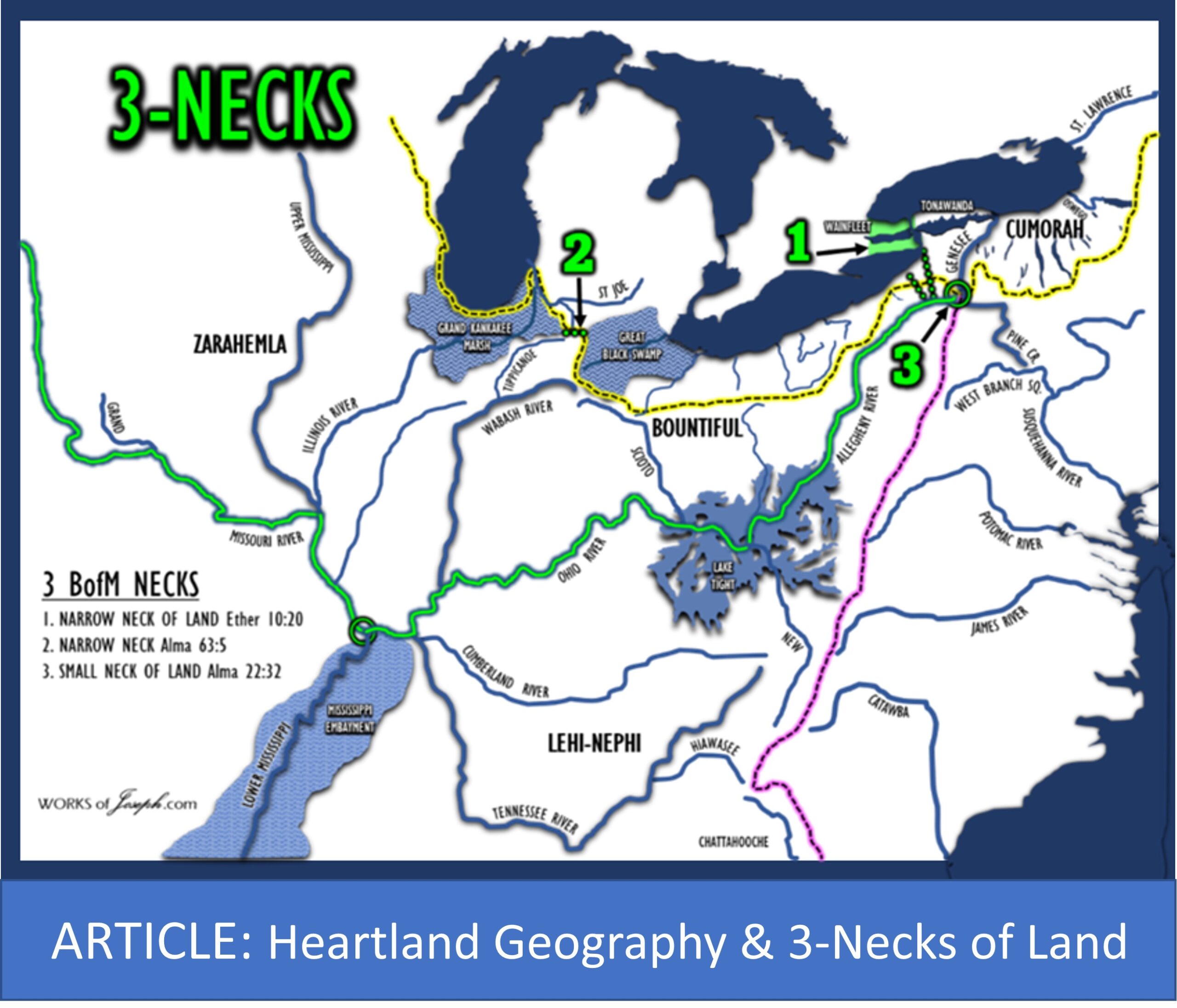
Lake Superior (Gitche Gumee) and other Great Lakes were an integral part of the lives of the Jaredites and the Nephites.
World, National, and BYU Historians nearly all agree that the Hopewell Culture of the Native American's began in Florida in about 550 BC and ended in upstate New York near the Great Lakes in about 400 AD. Think about that. It's a matching time-line for the life of the Nephites isn't it? That alone doesn't prove they are the same people, but it sure is a huge feather in the cap for the Heartland Model of the Book of Mormon. There are thousands of artifacts, arrowheads, breastplates, swords, copper head plates, carbon dated villages, language, and other evidence that says both cultures happened in the Heartland of North America with very similar histories.
I believe the Book of Mormon Events began in North America as many prophets and leaders have taught. Pres Hinckley said, “I should like to say a few words about America…No land is without its beauty, no people without their virtues, and I hope that you who come from elsewhere will pardon my saying a few words concerning my own native land, America…surely this is a good land, a choice land, a chosen land. To me it is a miracle, a creation of the Almighty.” Gordon B. Hinckley Let Not Your Heart Be Troubled”. and Pres. Monson said, “The Lord gave a divine promise to the ancient inhabitants of this favored country (the United States): ‘Behold, this is a choice land, and whatsoever nation shall possess it shall be free from bondage, and from captivity, and from all other nations under heaven, if they will but serve the God of the land, who is Jesus Christ” (Ether 2:12).
“Our Heavenly Father inspired the leaders of…the United States of America, that they might together, under His direction, having been raised up by God for the purpose, establish the Constitution of this country and…Bill of Rights, that by the year of our Lord 1805 [there would be] a climate where our Heavenly Father could send into this period of mortality a choice spirit who would be known as Joseph Smith, Jr.” Teachings of Thomas S. Monson by Thomas S. Monson 2011
In the quote above, President Monson believes the United States is the Promised Land of the Book of Mormon. Why do Mesoamericanists believe the entire continent of the Americas is the Promised land?
You mean Greenland, Guatemala, and the Northwest Territories are the Promised Lands? I love all of God's children in the entire world and God loves us all the same, but seriously? If a person from Greenland comes to the United States legally as a citizen that person can also live in the Promised Land, correct? I'm sure Greenland has much beauty on its own, but it is not the Promised Land, is it?
I am not belittling other lands. I'm just making a legitimate statement. Why is the United States and Israel the two Promised Lands? Because Christ said so. See 3 Nephi 20:22,29
The Wreck of the Edmund Fitzgerald
“On November 9, 1975, the Edmund Fitzgerald pushed across the waters of Lake Superior with a cargo of iron ore. A storm came up in the afternoon and pounded the ship through the night with winds up to 75 mph, blinding snow, and waves reaching 25 feet…
Less than two hours later, the Edmund Fitzgerald had disappeared from radar. No distress calls were ever received. Rescuers found a few empty lifeboats, buoys, and other bits of debris on the lake. Several days later, the remains of the ship were discovered in two pieces on the bottom of Lake Superior, only 17 miles from the safety of Whitefish Bay. All 29 crew members were lost. Every November 10, the bell at the Mariner’s Church in Detroit, Michigan, rings 29 times in their memory.” National Museum of American history
Verse 7 of Lightfoot’s Song
In a musty old hall in Detroit, they prayed
In the Maritime Sailors' Cathedral
The church bell chimed 'til it rang twenty-nine times
For each man on the Edmund Fitzgerald
The legend lives on from the Chippewa on down
Of the big lake they call Gitche Gumee
Superior, they said, never gives up her dead
When the gales of November come early!
A big thank you to Stephen Reed of Mesa, Arizona. He shared with me the Song of Hiawatha and reminded me of the great Gordon Lightfoot song below. He is a great supporter of FIRM Foundation and has a fantastic blog about his idea of the Two Cumorah Theory that you will love. https://twocumorahsolution.blogspot.com/ and a great blog here: https://bookofmormonevidence.org/8657-2/
Contact Stephen at [email protected].
Song of Hiawatha - Longfellow 12 tribes and Buried weapons
Said: "Behold it, the Pukwana!
By this signal from afar off,
Bending like a wand of willow,
Waving like a hand that beckons,
Gitche Manito, the mighty,
Calls the tribes of men together,
Calls the warriors to his council!"
Down the rivers, o'er the prairies,
Came the warriors of the nations,
Came the Delawares and Mohawks,
Came the Choctaws and Camanches,
Came the Shoshonies and Blackfeet,
Came the Pawnees and Omahas,
Came the Mandans and Dacotahs,
Came the Hurons and Ojibways,
All the warriors drawn together
By the signal of the Peace-Pipe,
To the Mountains of the Prairie,
To the great Red Pipe-stone Quarry.
And they stood there on the meadow,
With their weapons and their war-gear,
Painted like the leaves of Autumn,
Painted like the sky of morning,
Wildly glaring at each other;
In their faces stern defiance,
In their hearts the feuds of ages,
The hereditary hatred,
The ancestral thirst of vengeance.
Gitche Manito, the mighty,
The creator of the nations,
Looked upon them with compassion,
With paternal love and pity;
Looked upon their wrath and wrangling
But as quarrels among children,
But as feuds and fights of children!
Over them he stretched his right hand,
To subdue their stubborn natures,
To allay their thirst and fever,
By the shadow of his right hand;
Spake to them with voice majestic
As the sound of far-off waters,
Falling into deep abysses,
Warning, chiding, spake in this wise:--
"O my children! my poor children!
Listen to the words of wisdom,
Listen to the words of warning,
From the lips of the Great Spirit,
From the Master of Life, who made you!
"I have given you lands to hunt in,
I have given you streams to fish in,
I have given you bear and bison,
I have given you roe and reindeer,
I have given you brant and beaver,
Filled the marshes full of wild-fowl,
Filled the rivers full of fishes:
Why then are you not contented?
Why then will you hunt each other?
"I am weary of your quarrels,
Weary of your wars and bloodshed,
Weary of your prayers for vengeance,
Of your wranglings and dissensions;
All your strength is in your union,
All your danger is in discord;
Therefore be at peace henceforward,
And as brothers live together.
"I will send a Prophet to you,
A Deliverer of the nations,
Who shall guide you and shall teach you,
Who shall toil and suffer with you.
If you listen to his counsels,
You will multiply and prosper;
If his warnings pass unheeded,
You will fade away and perish!
"Bathe now in the stream before you,
Wash the war-paint from your faces,
Wash the blood-stains from your fingers,
Bury your war-clubs and your weapons,
I Love the Heartland
There are Lamanites in North, South, and Central America through migration, intermarriage and other circumstances. However, through much study and prayer it makes most sense to me that Lehi landed in Florida and Nephi leaving his brethren, ended up in northern Georgia and Tennessee. Mosiah left and went to Iowa and Illinois to join the Mulekites who were already in those areas. Knowing this is important to me as Moroni has said "ye may know the truth of all things."
I have received many personal answers to questions of secondary importance to my spiritual confirmation that the Book of Mormon is true and Joseph translated it using the Interpreters as he said in JSH 1:35, and not by using a silly, in my opinion, stone in a hat. I agree with Joseph Fielding Smith's wonderful information below. I caution the reader when Elder Smith says, some may be, "greatly disturbed in their faith", quoted below.
I love the New York area and I call the New York Iroquois, "Joseph Smith's Lamanites" as he lived near them and was taught by many of them in his city and county. See what Elder Smith says about Zelph, Onondaga and the Great Lakes area where they lived.
Joseph Fielding Smith” said,
“In the face of this evidence coming from the Prophet Joseph Smith, Oliver Cowdery, and David Whitmer, we cannot say that the Nephites and Lamanites did not possess the territory of the United States and that the Hill Cumorah is in Central America. Neither can we say that the great struggle which resulted in the destruction of the Nephites took place in Central America.
If Zelph, a righteous man, was fighting under a great prophet-general in the last battles between the Nephites and Lamanites; if that great prophet-general was known from the Rocky Mountains to "the Hill Cumorah or eastern sea," then some of those battles, and evidently the final battles did take place within the borders of what is now the United States. [Mesoamericanists believe the final battles happened somewhere in Mexico]. There were no righteous prophets, save the Three Nephites, after the death of Moroni, and we learn that Zelph was slain during one of these battles during the great last struggle between the Nephites and Lamanites and was buried near the Illinois River.
In the Book of Mormon story the Lamanites were constantly crowding the Nephites back towards the north and east. If the battles in which Zelph took part were fought in the country traversed by the Zion's Camp, then we have every reason to believe from what is written in the Book of Mormon, that the Nephites were forced farther and farther to the north and east until they found themselves in the land of Ripliancum, which both Ether and Mormon declare to us was the land of Ramah or Cumorah, a land of "many waters," which "by interpretation, is large, or to exceed all."
This being true, what would be more natural then that Moroni, like his father Mormon, would deposit the plates in the land where the battles came to an end and the Nephites were destroyed? This Moroni says he did, and from all the evidence in the Book of Mormon, augmented by the testimony of the Prophet Joseph Smith, these final battles took place in the territory known as the United States and in the neighborhood of the Great Lakes and hills of Western New York. And here Moroni found the resting place for the sacred instruments which had been committed to his care.” Joseph Fielding Smith, Doctrines of Salvation Vol. 3 Ch. 12
This rings so true to me and Elder Smith gives we members of the Church a dire warning giving a direct warning to us.
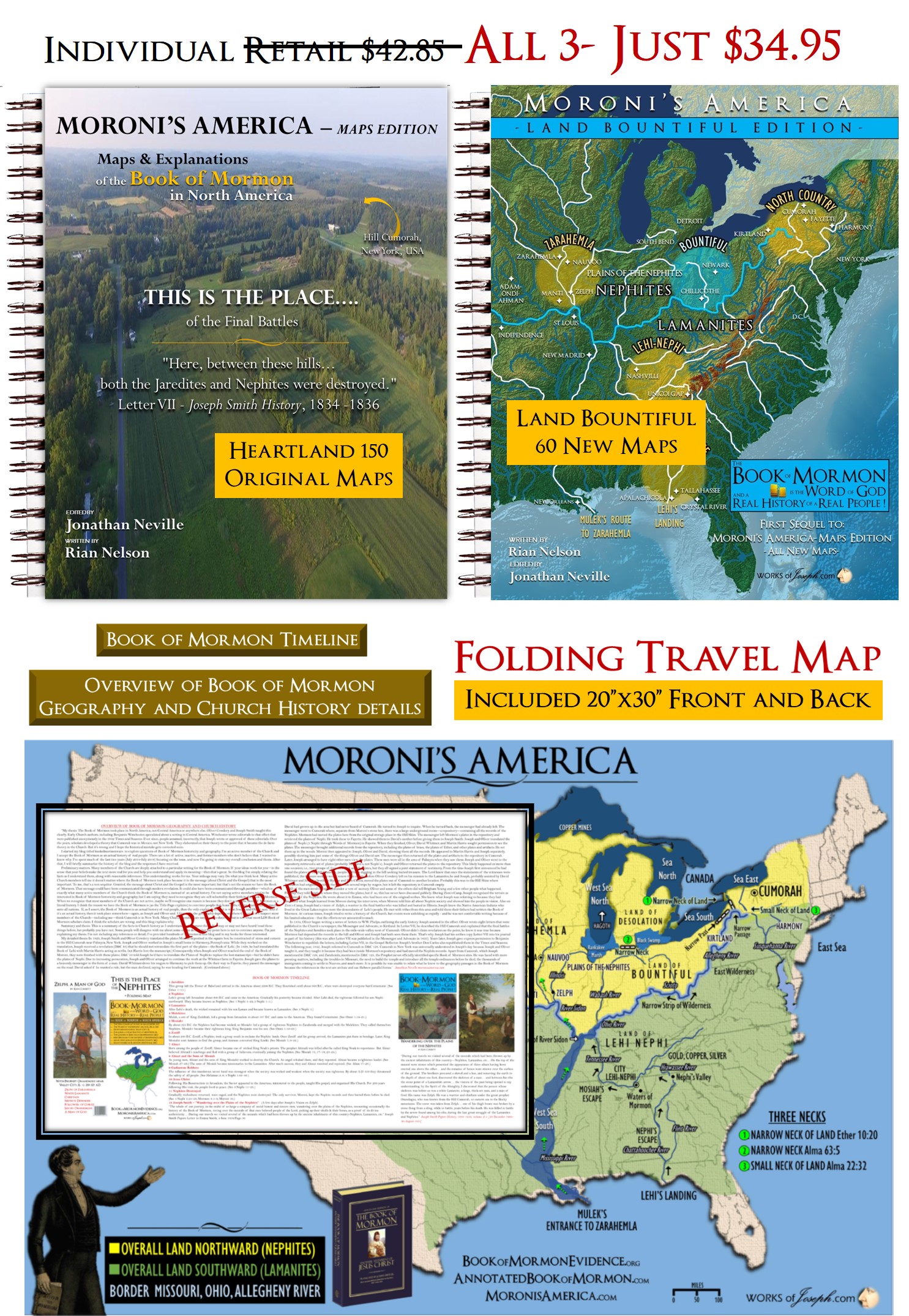
"LOCALE OF CUMORAH, RAMAH, AND RIPLIANCUM. This modernistic theory of necessity, in order to be consistent, must place the waters of Ripliancum and the Hill Cumorah some place within the restricted territory of Central America, notwithstanding the teachings of the Church to the contrary for upwards of 100 years. Because of this theory some members of the Church have become confused and greatly disturbed in their faith in the Book of Mormon. It is for this reason that evidence is here presented to show that it is not only possible that these places could be located as the Church has held during the past century, but that in very deed such is the case.
It is known that the Hill Cumorah where the Nephites were destroyed is the hill where the Jaredites were also destroyed. This hill was known to the Jaredites as Ramah. It was approximately near to the waters of Ripliancum, which the Book of Ether says, "by interpretation, is large, or to exceed all.
Mormon adds: "And it came to pass that we did march forth to the land of Cumorah, and we did pitch our tents round about the hill Cumorah; and it was in a land of many waters, rivers, and fountains; and here we had hope to gain advantage over the Lamanites.".
"In the Book of Mormon story the Lamanites were constantly crowding the Nephites back towards the north and east. If the battles in which Zelph took part were fought in the country traversed by the Zion's Camp, then we have every reason to believe from what is written in the Book of Mormon, that the Nephites were forced farther and farther to the north and east until they found themselves in the land of Ripliancum, which both Ether and Mormon declare to us was the land of Ramah or Cumorah, a land of "many waters," which "by interpretation, is large, or to exceed all. " Joseph Fielding Smith Doctrines of Salvation (Click Link for entire Chapter) Volume 3 Chapter 12 A VOICE FROM CUMORAH
Big Question
How can Joseph Fielding Smith be so adamant and describe the Book of Mormon location so completely, as for anyone to even think Elder Smith could have made a mistake when he spoke these words? Ask someone who believes in the Mesoamerican theory and it is mind boggling in my opinion that they will and do dismiss Elder Smith, as just his opinion when he said this, or he made a mistake, or he didn't understand etc. I sincerely believe Joseph Fielding Smith, and I just feel any other location for the Book of Mormon makes "No Sense" to me.
More Mesoamerican Quotes
Considering the quote above by Elder Smith, the following quote from a good member of the Church seems very out of place to me. “There remain Latter-day Saints who insist that the final destruction of the Nephites took place in New York, but any such idea is manifestly absurd. Hundreds of thousands of Nephites traipsing across the Mississippi Valley to New York, pursued (why?) by hundreds of thousands of Lamanites, is a scenario worthy only of a witless sci-fi movie, not of history.” John L. Sorenson, Mormon’s Codex (Deseret Book, 2013), p. 688.
I am one of those "Latter-day Saints who insist that the final destruction of the Nephites took place in New York", not as brother Sorensen says. We are all free to choose our own position as our Church has no doctrine on the subject, but I just believe the Heartland setting makes most sense to me.
John Sorenson also said, "Nephi left us no information in the Book of Mormon about the route, nor did he tell us in modern terms where they landed. But when we analyze Book of Mormon statements about geography and events, the “land of first inheritance” can only lie west (Pacific) coast of Central America (1 Nephi 18:23; Alma 22:28)… [T]he southernmost portion of Guatemala’s Pacific coast or adjacent El Salvador is most likely where Lehi’s party landed and first settled.(7) Sorenson, John L., An Ancient American Setting for the Book of Mormon. http://www.bmaf.org/node/415
The Phoenicia Expedition
There is solid evidence that Lehi could have made a voyage from Oman in Saudi Arabia to Florida in 600 BC. An English Navy Captain, Philip Beale made that possible.
Watch Rodney Meldrum and Philip Beale speak about the Phoenician 2009 Expedition that proved a voyage by Lehi from Oman to Florida was definitely possible.
Click Here! Lehi’s Voyage Demonstrated: Phoenicia Expedition!
In 2009 Beale had a ship constructed in Syria made of the local wood used to build a replica 600 BC ship copying the found wreckage of Phoenician ships.
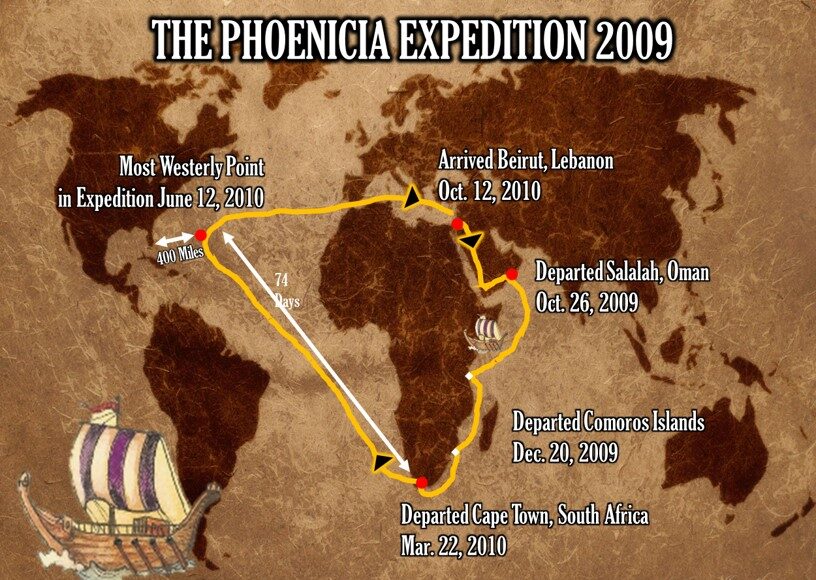
Book of Mormon as Compared with Longfellow's "Song of Hiawatha"
Thanks to my good friend Jayne Corbett for sharing this article with me.

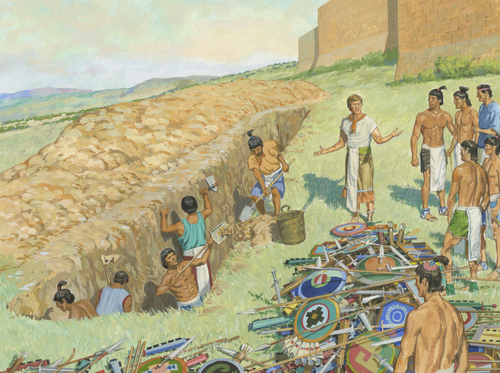
This particular article is a reprint from an early Foundation for Research on Ancient America newsletter no. 36 dated January 14, 1981 pg. 4 written by Gordon W. Harrison, of Sharon, Pennsylvania:
There is an incident told in Alma 14, of the people of Anti-Nephi-Lehi taking their swords and all their weapons which were used for the shedding of man's blood and burying them deep in the earth. They made a covenant with God that they would never again shed the blood of man.
It is an unlikely story, isn't it? So unlikely, in fact, that I would be willing almost to wager that there is only one other place in all this world that such a story as that can be found. That is in Longfellow's "Song of Hiawatha."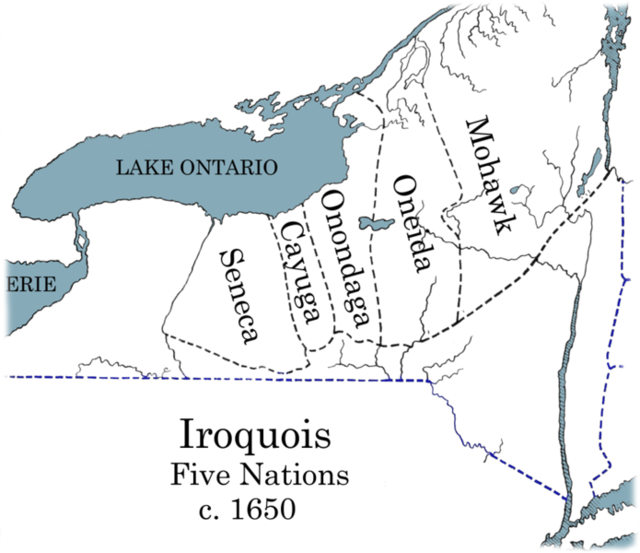 I had a little of "Hiawatha" in high school. About all I could remember of it was their God Gitche Manito, Nokomis and the shores of Gitche Gumee, Hiawatha's birch bark canoe and Minnehaha. I had never read all of the poem but I liked what I read so well that I could not forget it. Many years later, after I had become a member of the Reorgnized Church of Jesus Christ of Latter Day Saints, and had become familiar with the Book of Mormon, thoughts of Hiawatha came back to me and I inquired about it at the library. I took home a book of Longfellow's poems with "The Song of Hiawatha" in it.
I had a little of "Hiawatha" in high school. About all I could remember of it was their God Gitche Manito, Nokomis and the shores of Gitche Gumee, Hiawatha's birch bark canoe and Minnehaha. I had never read all of the poem but I liked what I read so well that I could not forget it. Many years later, after I had become a member of the Reorgnized Church of Jesus Christ of Latter Day Saints, and had become familiar with the Book of Mormon, thoughts of Hiawatha came back to me and I inquired about it at the library. I took home a book of Longfellow's poems with "The Song of Hiawatha" in it.
I began reading, without the slightest idea of what I was going to find. I had not read very far before I discovered that I was receiving one of the greatest surprises of my life, for I was actually reading a short version of much of the Book of Mormon. With poetic license, Longfellow tells what the Indians believed in the way of legends and traditions as they were handed down through the ages, and of the things that had happened in the lives of their forefathers in the long ago.
They believed in God who was their Creator and Master of Life. It was he who gave them everything. Hiawatha was their prophet and teacher and deliverer. He had a wondrous birth and being, much different from anyone else's. In the first chapter God calls all the Indian tribes together and reprimands them for their fighting. He commands them to be at peace with one another and to live toghther as brothers, and counsels them in these words:
"I will send a Prophet to you, a Deliverer of the nations, who shall guide you and shall teach you, who shall toil and suffer with you. If you listen to his counsels, you will multiply and prosper; if his warnings pass unheeded, you will fade away and perish!"
He commanded them to bathe in the stream before them and wash themselves clean, which they did. This referred, no doubt, to their baptism, as it was remembered. God commanded them at the same time to bury their war-clubs and weapons (so like the people of Anti-Nephi-Lehi):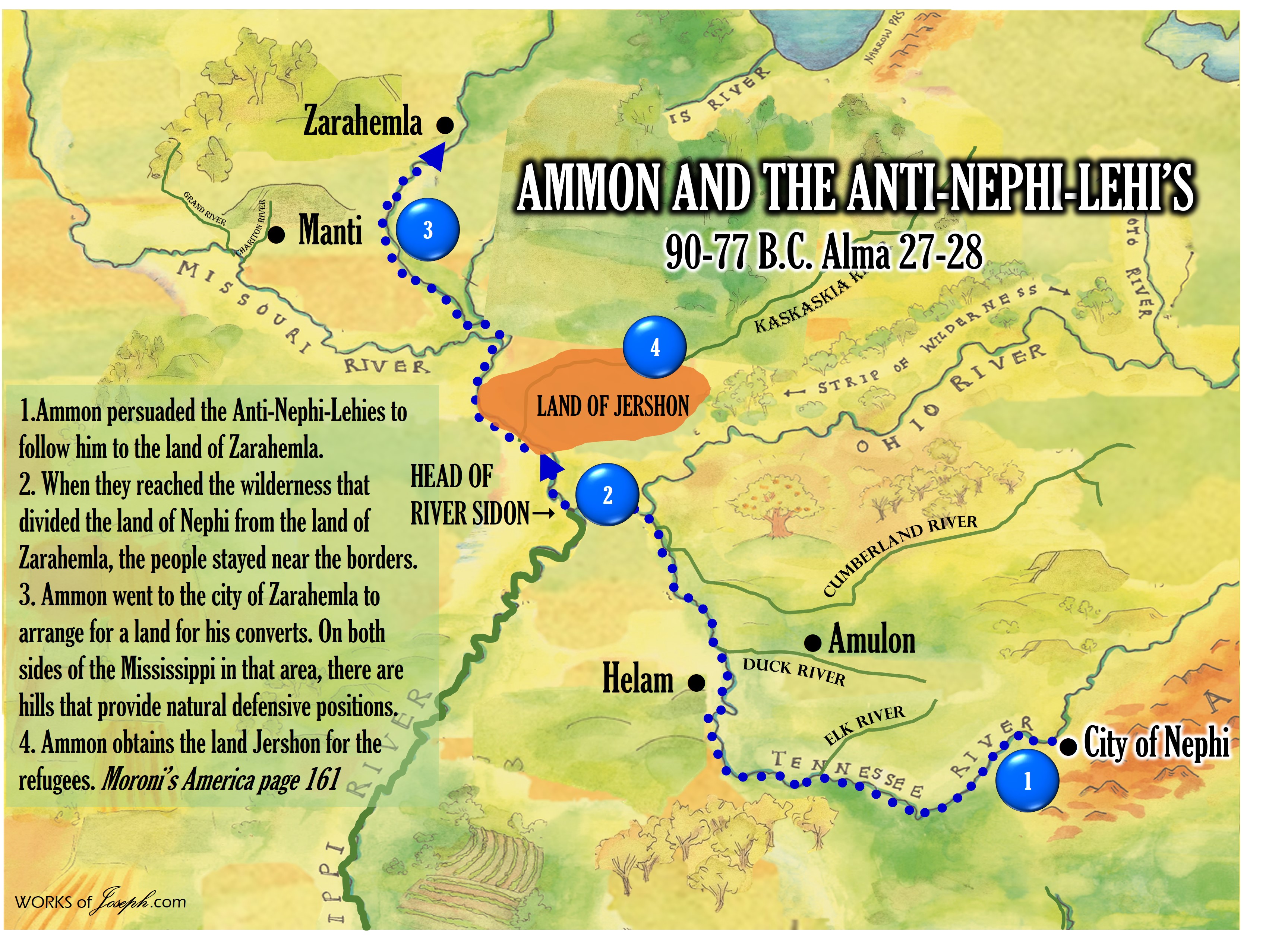

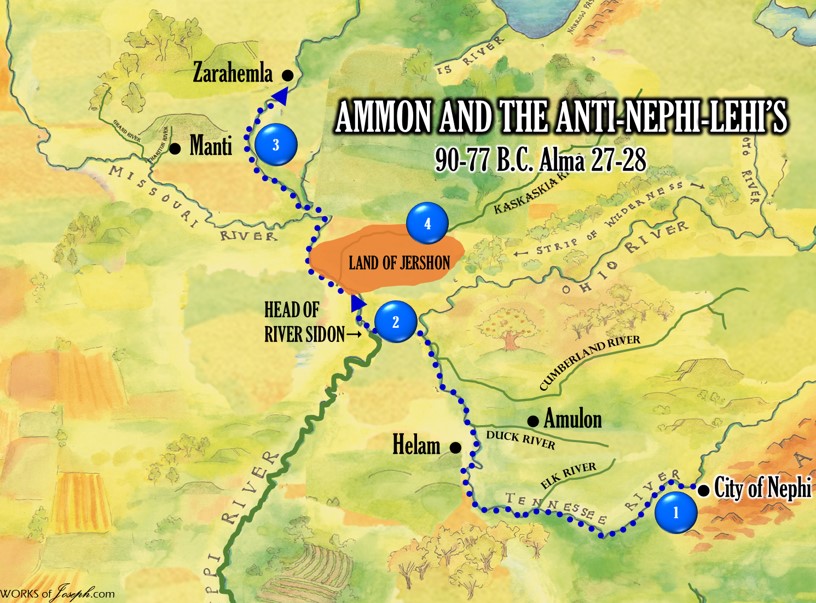 "Then upon the ground the warriors threw their cloaks and shirts of deer-skin, threw their weapons and their war-gear, leaped into the rushing river, washed the war-paint from their faces. Clear above them flowed the water, clear and limpid from the footprints of the Master of Life descending; dark below them flowed the water, soiled and stained with streaks of crimson, as if blood were mingled with it!" If we could see the water after our baptism, as God sees it, maybe it would look that way, too.
"Then upon the ground the warriors threw their cloaks and shirts of deer-skin, threw their weapons and their war-gear, leaped into the rushing river, washed the war-paint from their faces. Clear above them flowed the water, clear and limpid from the footprints of the Master of Life descending; dark below them flowed the water, soiled and stained with streaks of crimson, as if blood were mingled with it!" If we could see the water after our baptism, as God sees it, maybe it would look that way, too.
"From the river came the warriors, clean and washed from all their war-paint; on the banks their clubs they buried, buried all their warlike weapons. Gitche Manito, the mighty, the Great Spirit, the creator, smiled upon his helpless children!"
Where else can you read a story like that except in the Book of Mormon? And about the same people!
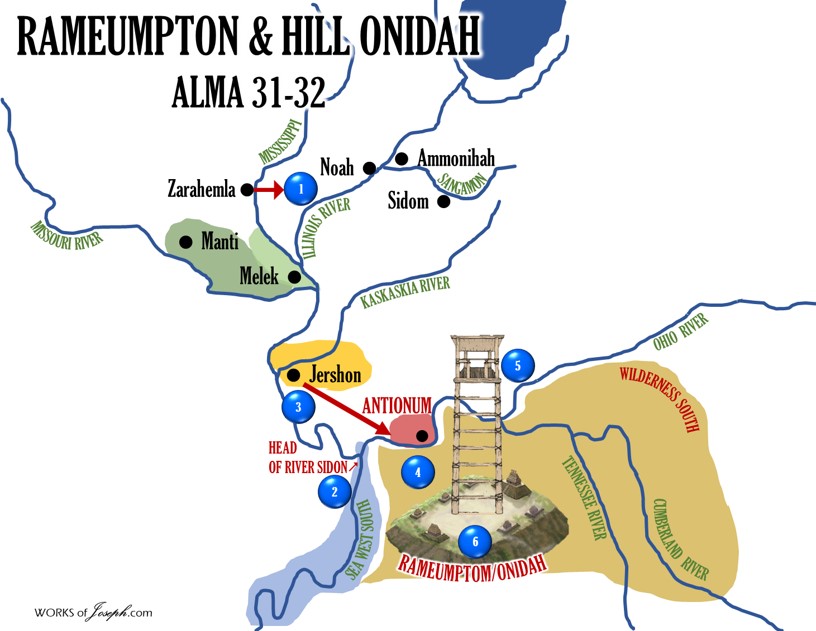
I suggest that you read "The Song of Hiawatha" studiously. You will find many things in it similar to the Book of Mormon. Longfellow said he got these legends and traditions from the Indians and he published his poem in 1855. Joseph Smith got his record from God and published it in 1830.
Longfellow's poem, Chapter 5, tells about Hiawatha's prayer and fasting. Chapter 6 tells about the singer, singing of death, and life undying, in the land of the Hereafter. So the Indians knew about that. Chapter 13 says, "Buried was the bloody hatchet," and "the dreadful war-club," and all the "war-like weapons." The warcry was forgotten and there was peace among the nations. They went about their hunting and their possessions were unmolested. Was this the "Golden Age" of the Nephites?
There are to many similarities in these two stories, about the same people, to be just a coincidence. Don't you think so, too? http://www.centerplace.org/library/bofm/hiawatha.htm
Read Below for Extra Credit-
Email me and I will send you a map of your choice.
Hiawatha
"Hiawatha, also known as Ayenwathaaa or Aiionwatha, was a precolonial Native American leader and co-founder of the Iroquois Confederacy. He was a leader of the Onondaga people, the Mohawk people, or both. According to some accounts, he was born an Onondaga but adopted into the Mohawks.

Although Hiawatha was a real person, he was mostly known through his legend. The events in the legend have been dated to the middle 1100s through the occurrence of an eclipse coincident with the founding of the Iroquois Confederacy. This material and quotations are taken from the Mohawk version of the legend, as related by the prominent chief Seth Newhouse (Dayodekane. For an Onondaga version of the legend, see Parker: "The Hiawatha Tradition"
When the founder of the Confederacy, Dekanawidah, known as The Great Peacemaker, first came to Iroquoia, one of the first people he met was Hiawatha, not yet called by that name. At that time Hiawatha was a wild man and a cannibal, known as "the man who eats humans." When Dekanawidah came to his cabin he climbed onto the roof, looked down through the smoke hole, where there was a large kettle of water for cooking a meal of human flesh. When Hiawatha came home he looked into the water and saw Dekanawidah's face reflected back to him, which he thought was his own. "In that face he was aware of a beauty, a wisdom and strength, which at first filled him with astonishment and then with shame, for it was not the face of one who killed and ate his fellow men." Dekanawidah came down, sat across the fire from him, and passed on to him the Great Law of Peace. Hiawatha accepted the message, and agreed to stay and work with his own people while Dekanawidah went on to pass the message to other nations.
The principal chief of the Onondaga at that time was a cruel tyrant called Tadodaho, or Atotarho. Tadodaho is described as twisted in both body and mind. "His hair was filled with living snakes. Snakes' eyes looked out from his finger ends." Dekanawidah charged Hiawatha with converting Tadodaho—to "comb the snakes out of [Tadodaho's] hair." He gave him the name Hiawatha, which means "he who combs."
After Dekanawidah left, Hiawatha presented his proposals to the Onondaga in councils, but Tadodaho kept frustrating all his efforts and disrupting the councils. He caused the death of Hiawatha's three daughters and his wife by magic. Grief-stricken, Hiawatha left his village and wandered, "stringing wampum and seeking someone who should understand the thirteen-string ceremony of condolence and take away his grief by the spell of the wampum." Finally he came to the territory of the Mohawk, where Dekanawidah had converted the entire nation. Dekanawidah chanted the words that have since been part of the Iroquois Requickening Ceremony: "I wipe away tears from thy face." "using the white fawn-skin of pity…I make it daylight for thee… I beautify the sky. Now shall thou do thy thinking in peace…" Afterwards, Hiawatha joined Dekanawidah in composing the laws of the Great Peace, and the Peace Hymn.
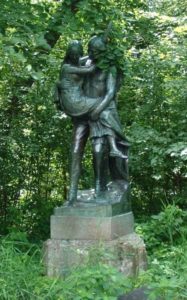
Then Hiawatha and Dekanawidah, together with the Mohawk chiefs, visited each of the other four Nations. They had no trouble with the Oneidas and the Cayugas, but the Senecas were divided against themselves and the Onondagas were afraid of the power of Tadodaho. A solar eclipse helped convince the Senecas, and the Onondagas were brought in by the power of the other four Nations and by the offer to Tadodaho that he become principal chief. "In the end the mind of [Tadodaho] was made straight, the crooks were taken out of his body, and Hiawatha combed the snakes out of his hair."
Hiawatha was noted for his speaking skills and message of peace. Dekanawidah, a Huron prophet and spiritual leader, proposed the unification of the Iroquois peoples who shared common ancestry and similar languages, but he suffered from a severe speech impediment which hindered him from spreading his proposal. Hiawatha was a skilled orator, and he was instrumental in persuading the Five Nations to accept the Great Peacemaker's vision and band together to become members of the Iroquois confederacy. The Tuscarora joined the Confederacy in 1722 to become the Sixth Nation. Little else is known of Hiawatha. The reason and time of his death is unknown. However his legacy is still passed on from generation to generation through oral stories, songs, and books.
The 1855 epic poem The Song of Hiawatha by Henry Wadsworth Longfellow tells the story of a hero of the same name but has no relationship to the historical Hiawatha.
The Iroquois Confederacy
Within the Iroquois Confederacy, which originally included five tribes (Mohawk, Onondaga, Oneida, Cayuga, and Seneca), Hiawatha was a leader from the Mohawk tribe. There he was well-known, and highly thought of by all of the tribes. He was a great speaker, and would eventually become the representative for the Great Peacemaker. The Great Peacemaker was a man who hoped to spread peace throughout all of the Haudenosaunee (Iroquois) Territory.
Due to the fact that he had a severe speech impediment, the Great Peacemaker needed a spokesperson. Hiawatha was willing to speak on behalf of Dekanawidah because violence had been developing throughout the Iroquois Territory. During these times of chaos, a leader named Tadodaho, who had despised the idea of peace, targeted and killed Hiawatha's wife and daughters. Thereafter, Hiawatha became the Peacemaker's speaker, so he could stop the violence. Dewanawidah and Hiawatha eventually obtained peace throughout the Iroquois by promising Tadodaho that Onondaga would become the capital of the Grand Council, the main governing body of the Iroquois. Hiawatha and Dekanawidah created the Great Law of Peace, recorded in wampum belts, to solidify the bond between the original five nations of the Iroquois.
Among the names of the fifty traditional Hoyenah (sachems) of the Haudenosaunee, Hiawatha (among others) is a representative of the Mohawk, and Tadodaho of the Onondaga.
Hiawatha Belt

The Hiawatha Belt is a wampum belt that symbolizes peace between the five tribes of the Iroquois. The belt depicts the tribes in a specific order from left to right. The Seneca are furthest to the left, representing them being the Keepers of the Western Door. Next is the Cayuga Tribe, and in the center of the belt, depicted with a different symbol, is the Onondaga Tribe, also known as the Keepers of the Central Fire. Next is the Oneida Tribe. Finally, shown farthest to the right is the Mohawk Tribe, depicted as the Keepers of the Eastern Door. The white line connecting all of the symbols for each tribe together represents the unity of the Iroquois. It also represents the gathering from the Great Law of Peace and the Iroquois Confederacy as a whole.
The wampum belt consists of black or purple-like and white beads that are made up of shells. Found in the Northeast of America, there are quahog clam shells that are often time used for the black and sometimes the white beads of these belts. Most often the Iroquois used various types of whelk spiral shells for the white beads.
Wampum figures in the story of Hiawatha. When Hiawatha was full of grief because his daughters were murdered, the Great Peacemaker gifted Hiawatha with the whelk shells and told him to put them on his eyes and ears and throat. These shells were a sign of healing and purity. Hiawatha used these shells to create unity. The Iroquois Nation believes that the Peacemaker was the one who gifted them the first wampum belt, which later was titled the Hiawatha Belt.
Today the image of the Hiawatha Belt is used on the Flag of the Iroquois Confederacy.
The Song of Hiawatha
Written by Henry Wadsworth Longfellow, the 1855 epic poem The Song of Hiawatha tells of the adventures of "Hiawatha" and his heroic deeds. This poem however has little to do with the actual Hiawatha. Henry Longfellow most likely took the name of Hiawatha and applied it to the Ojibway demigod Manabozho, and nothing more. This poem tells the story of a legendary heroic Native man starting from his birth and ending on his ascension to the clouds. It talks of many battles, losses, and moral lessons. Henry Longfellow along with another writer Henry Rowe Schoolcraft, hoped to combine stories of Native Americans and create a sense of pride and remembrance for the Native Americans during the 1820s and later.
Longfellow’s fictional Hiawatha has eclipsed the Hiawatha of legend in popular culture." Wikipedia
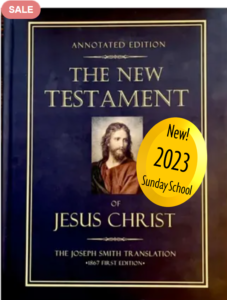
Annotated Edition of the New Testament NEW!
$54.95
The Annotated Edition of the New Testament of Jesus Christ

